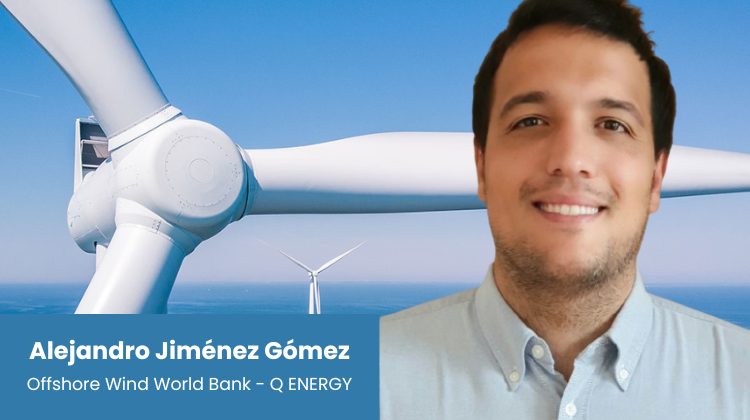European offshore wind is undergoing a period of redefinition. The recent 2.5 GW auction in Germany, which attracted no bids, exposed what the sector had already warned of: the risks of auction models that fail to provide certainty for developers are not attractive to investors.
According to Alejandro Jiménez Gómez, from the World Bank and, countries such as France offer more appealing frameworks for investors.
“They have bilateral contracts for difference, and the tariff is indexed, which greatly reduces uncertainty from the award to financial close,” he said in an interview with Strategic Energy Europe.
He added that having grid connection as the responsibility of the state removes part of the risk faced by developers.
Technology also shapes decisions and creates substantial differences between options. According to Jiménez Gómez, fixed-bottom offshore wind currently achieves very competitive prices, while floating, being less mature, still comes with higher costs but provides a more robust generation base for the power system.
At present, a range of €100 to €120/MWh could be viable depending on location, technical conditions and the scope of developer obligations.
It is worth noting that leading figures in the Spanish sector have mentioned that the viability threshold for floating wind farms is around €150/MWh, although this reality is largely linked to the lack of long-term guarantees.
“Falling below €100/MWh is only possible at sites with exceptional winds, optimal depths and distances, and with part of the infrastructure provided by the state,” the expert noted.
He also challenges simplistic analyses that directly compare the cost of floating offshore wind with solar or onshore wind. “We have to talk about what that energy costs with the adjusted LCOE, because that’s the reality.”
For the analyst, extending the operational life of wind farms to 35 years with proper maintenance and retrofits, increasing turbine size, and improving financing conditions are key.
Indexed CFDs combined with industrial PPAs are, in his view, essential to provide investor security and attract industry to host countries. “Leaving everything to PPAs without having a CFD right now is complicated,” he stated.
With lessons from the German setback and success stories in France and the Netherlands, Jiménez Gómez believes Europe must adjust its auction models to reduce risks, speed up processes and seize a window of opportunity that could close if inaction continues.
Spain and Portugal: Delays cooling investor interest
In the Iberian Peninsula, the specialist warns that the lack of definition and delays in launching the first offshore wind auctions have led several players to scale back or freeze investments.
“We are losing a lot of investment and many opportunities… the authorities have delayed things too much,” he said.
On Portugal, he notes that while the government has confirmed its first offshore wind auction for 2025 and designated development areas, the pace of progress since the initial announcements has slowed. In his view, momentum has eased like in Spain, which he attributes to delays in finalising the competitive criteria and shifting political priorities.
In Spain’s case, he warns that if no progress is announced this year, the loss of confidence will be difficult to reverse. “If a first auction in the Canary Islands is planned, which makes a lot of sense and is very likely to go well, I don’t know what they are waiting for,” he remarked.
He also mentions areas in Galicia, Catalonia and Andalusia, noting that some have been discarded, but with the right regulatory design they could be competitive.
All is not lost, as establishing a clear timetable, a competitive auction design and mechanisms to reduce uncertainty—taking successful models from other European countries as reference—could make the region a benchmark thanks to its strong industrial capacity and resource availability.






























